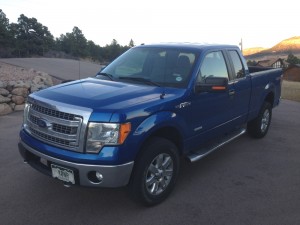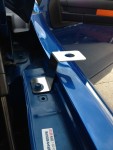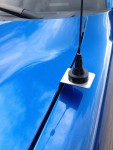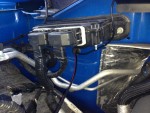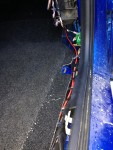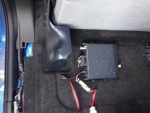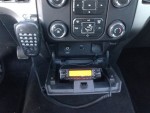Posts Tagged ‘VHF’
 ARRL Field Day: Season To Taste
ARRL Field Day: Season To Taste
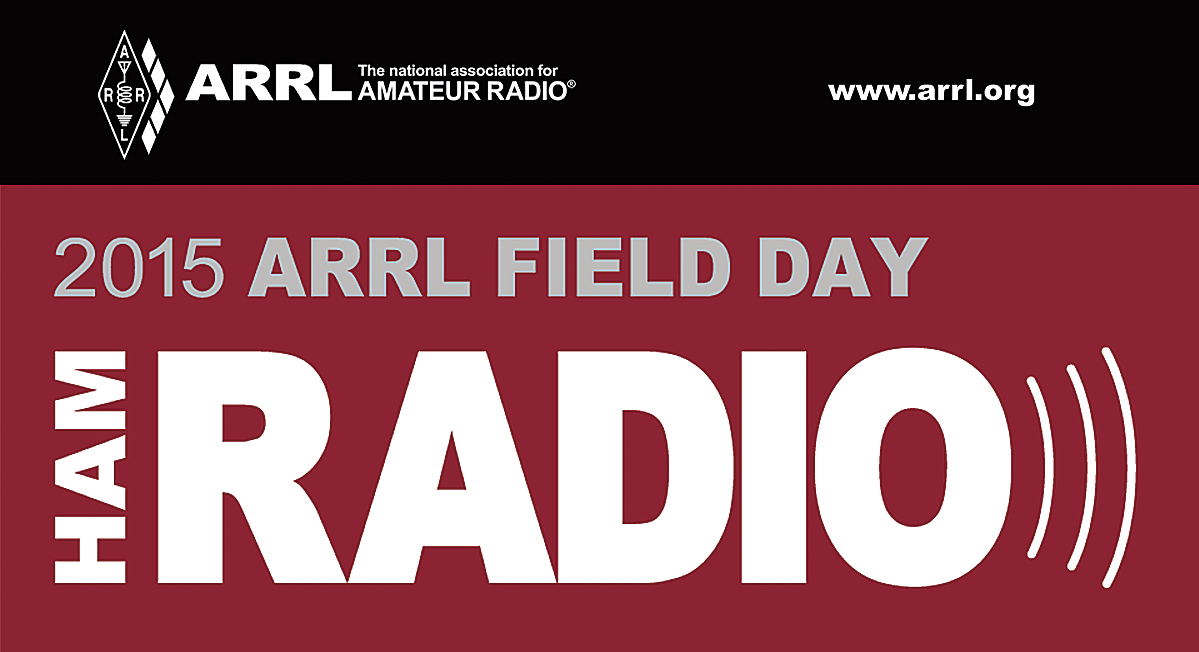 I’ve written before about the flexibility of Field Day and the need to season to taste to make it your own. I have always thought that one of the great things about Field Day is that it can be tuned to whatever interests you or your club. It can be a serious radio contest (well, almost); it can be an emcomm drill. It can be a radio campout; it can be a foodfest, it can be a beer-drinking party. Insert your idea here.
I’ve written before about the flexibility of Field Day and the need to season to taste to make it your own. I have always thought that one of the great things about Field Day is that it can be tuned to whatever interests you or your club. It can be a serious radio contest (well, almost); it can be an emcomm drill. It can be a radio campout; it can be a foodfest, it can be a beer-drinking party. Insert your idea here.
This year, our local club, the Tri-Lakes Monument Radio Association is going to try a new approach that we call Tech Field Day. We previously have held a one-day educational event that we call Tech Day, that featured a series of presentations and hands-on demonstrations. The main theme of Tech Day was to help the Technician level hams gain more knowledge and help them move on up to General class operating.
We are taking the basic idea of Tech Day and combining with a shortened one-day version of Field Day. So on Saturday June 27th, we’ll offer a series of educational presentations along with some classic Field Day radio operating. The operating emphasis will be on giving newer hams a chance to get on the air, probably on both HF and VHF. (Our plans are still coming together.) We will also promote the theme of emergency communications, operating off a emergency power source, etc.
There are a number of things that we are intentionally leaving out. We won’t operate the entire 24 hour period…in fact, we’ll probably just be on the air Saturday afternoon. We won’t worry about making a lot of contacts or running up the score. Our stations will be relatively simple (no towers, no amplifiers).
So that’s our idea of a fun Field Day. What are you planning to do?
73, Bob K0NR
The post ARRL Field Day: Season To Taste appeared first on The KØNR Radio Site.
 2015 SOTA VHF Activity Days
2015 SOTA VHF Activity Days
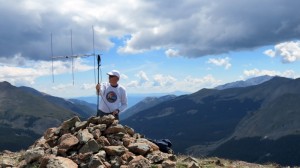 On the topic of operating events for Summits On The Air (SOTA) activations, Guy N7UN suggested focusing on six major events for 2015. Most of these are VHF-oriented but HF activity can also occur on these days.
On the topic of operating events for Summits On The Air (SOTA) activations, Guy N7UN suggested focusing on six major events for 2015. Most of these are VHF-oriented but HF activity can also occur on these days.
- Jan 24-26: ARRL Jan VHF Contest + NA SOTA Winter Activity Weekend
(oops, I guess we already missed that one) - Apr 18-19: North America SOTA Spring Activity Weekend
- Jun 13-15: ARRL June VHF Contest + NA SOTA Summer Activity Weekend
- Jul 18-19: CQ WW VHF Contest + optional for SOTA
- Aug 1-2: Colorado 14er Event + NA SOTA Rocky Mtn Rendezvous + W7 SOTA Activity Weekend + ARRL UHF Contest
- Sept 12-14: ARRL Sept VHF Contest + NA SOTA Fall Activity Weekend
 Of course, any day is a good day for SOTA activity. I also think six weekends are a great way to focus our operating activity and create S2S (summit to summit) radio contacts. The August 1-2 weekend looks to be the alignment of the planets with four events happening on that weekend. Early August usually offers excellent conditions for hiking the highest peaks in Colorado, so come on out and play.
Of course, any day is a good day for SOTA activity. I also think six weekends are a great way to focus our operating activity and create S2S (summit to summit) radio contacts. The August 1-2 weekend looks to be the alignment of the planets with four events happening on that weekend. Early August usually offers excellent conditions for hiking the highest peaks in Colorado, so come on out and play.
For more info on VHF SOTA, see How To Do a VHF SOTA Activation.
Get off the couch, put on your hiking boots, grab your backpack, grab your radio but most important: get on the air!
73, Bob K0NR
The post 2015 SOTA VHF Activity Days appeared first on The KØNR Radio Site.
 2013 Ford F-150 Ham Radio Installation
2013 Ford F-150 Ham Radio Installation
After acquiring a Ford F-150 truck last year, I’ve been working on getting a ham radio installed in it. At times, I have loaded up my vehicle with multiple radios covering HF through 70 cm but lately I am content with just having a reasonable dualband 2m/70 cm FM rig in the mobile. Actually, I used a Yaesu FT-8900 that does FM on 10m, 6m, 2m and 70 cm but just set it up for the two bands.
One of the most critical questions for a mobile installation is what kind of antenna to install and where to put it. In the end, the antenna is going to be the main determinant of mobile performance. Ideally, I’d like to have the antenna on the roof of the cab but the truck will not fit in my garage in that configuration. Another option I considered was mounting a longer dualband antenna using one of the stake pocket mounts from Breedlove. I prefer NMO mounts for VHF/UHF antennas and the stake pocket looked like a good way to go. However, a little measuring revealed that a 1/2-wave or 5/8-wave 2m antenna on the stack pocket was not going to clear my garage door. So it seemed that I was limited to a shorter antenna. I may still use the stake pocket mount for an additional antenna for road trips or to add 6m and 10m antennas.
At this point, the F-150 bracket offered by The Antenna Farm looked like a good option. They have a number of these brackets made specifically for various vehicles, so check them out. This made the antenna installation quite simple. <click on any of the photos for a larger view>
The antenna is an NMO-mount dualband that I had laying around the hamshack. I don’t recall the exact model number but these are very common, about 19-inch long for 1/4-wave operation on 2m and a small loading coil to make it work on the 70cm band.
The F-150 has several precut holes for passing wires through the firewall. I used one that is on the passenger side just below a large module, as shown in the photo. It took a stiff wire and some force to punch my way through the rubber plug and into the cab compartment.
I don’t have a photo of the battery connection but I connected the positive lead right onto the battery terminal while the negative lead was attached to the truck chassis near the battery. You may have been told to always connect directly to the battery terminals but that advice no longer applies to some newer cars because there is a current monitoring device in the negative battery lead. To avoid confusing the vehicle battery monitoring system, the negative connection to your transceiver needs to be on the chassis side of the current monitor. Alan K0BG explains this issue on his web site. Actually, Alan has a wealth of information on mobile installations on his web site: www.k0bg.com. Oh, of course, I used inline fuses on both the positive and negative power cables.
I mounted the FT-8900 transceiver on the floor under the back seat. To route the power cables and antenna coax, I pulled up the flat plastic trim piece that runs along the floor at the passenger door. I started from the front and did some careful prying (and praying) to remove the trim without breaking it. This exposes a trough with a factory wiring harness in it but there’s room for more. A few other plastic trim pieces were removed to get access to the wires coming through the firewall. All in all, this was not that difficult. (Yea, Ford!)
The photo to the left shows the FT-8900 radio installed under the passenger side rear seat. I drilled holes through the floor and mounted the radio with hefty sheet metal screws. The screws go right through the metal floor and and can be seen from under the truck. (Check that out before drilling!) Because the radio body is under the rear seat, I am using a small external speaker mounted near the drivers seat.
The radio control head is mounted inside a little door/shelf that normally pops open to reveal the USB port for plugging in a smartphone. (Note that Ford has multiple seat / dashboard configurations.)
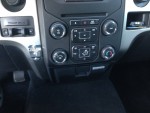 The FT-8900 control head just fits inside this little shelf, even when the door is closed (see photo). The microphone does have to be removed to close the door. I mounted a microphone hanger with a couple of sheet metal screws, as shown in the photo. I don’t like the crappy little hanger that usually comes with a ham transceiver so I bought some higher quality hangers on Amazon.
The FT-8900 control head just fits inside this little shelf, even when the door is closed (see photo). The microphone does have to be removed to close the door. I mounted a microphone hanger with a couple of sheet metal screws, as shown in the photo. I don’t like the crappy little hanger that usually comes with a ham transceiver so I bought some higher quality hangers on Amazon.
Overall, I am pleased with the radio install. The antenna location is clearly a compromise and I notice the performance is not as good as my previous vehicle (which was a small SUV with an NMO mount antenna in the middle of the roof.) But the antenna is “low profile” and sufficient for “around town” mobile operating. I am getting a little noise on the 2m band which needs some investigation. The 70cm band is very clean and is the band I use the most.
73, Bob K0NR
The post 2013 Ford F-150 Ham Radio Installation appeared first on The KØNR Radio Site.
 Dorking With VHF Contest Rules
Dorking With VHF Contest Rules
 One continuing discussion in the VHF community is how to promote more activity, especially during the major VHF contests. One central theme that always emerges is how to modify the VHF contest rules to make them better, to make them fairer and to encourage new contesters. (Let me say up front that there is room for improvement in the contest rules but I don’t think rule changes alone will change contest participation significantly.)
One continuing discussion in the VHF community is how to promote more activity, especially during the major VHF contests. One central theme that always emerges is how to modify the VHF contest rules to make them better, to make them fairer and to encourage new contesters. (Let me say up front that there is room for improvement in the contest rules but I don’t think rule changes alone will change contest participation significantly.)
In 2013, the ARRL contests added the Three-Band Single Operator and Single Operator FM Only entry categories. In January 2015, the ARRL added three more categories: Single Operator Unlimited High Power, Single Operator Unlimited Low Power, and Single Operator Unlimited Portable. These “unlimited” categories allow “passive use of spotting assistance” which roughly means these operators can monitor the various DX spotting networks but not spot themselves. The CQ Worldwide VHF Contest already allows passive assistance for all participants and self-spotting for digital EME and meteor scatter contacts. See the CQ WW VHF rules.
In January, the ARRL announced additional changes:
The Board … adopted amendments to the General Rules for ARRL Contests Above 50 MHz to encourage greater participation and band utilization. The changes become effective with the 2015 June ARRL VHF Contest. The revisions stemmed from recommendations offered by the Board’s Programs and Services Committee’s ad-hoc VHF and Above Revitalization subcommittee, composed of active VHF/UHF contesters, and they received strong support from the VHF/UHF community.
The subcommittee was charged with developing recommendations to increase the level and breadth of ARRL VHF and above contest participation and encourage operation on lesser-used bands. As a start to the process, the Board approved three changes that will permit assistance for all operator categories, with no effect on entry category; permit self-spotting for all operator categories, and allow single operators to transmit on more than one band at a time.
The changes will permit assistance in arranging contacts, but not in conducting contacts. They will, for example, allow a station to announce its location in a chat room, on a repeater, or even via e-mail.
The self-spotting/assistance issue is a hotly debated issue among VHFers, with two main schools of thought:
1) Contacts should be made completely independent of non-amateur assistance. Sometimes passive spotting assistance is allowed, but some folks want to eliminate that practice as well.
2) Contacts can be made with non-amateur assistance (spotting networks, chat rooms, etc.) as long as a complete radio contact occurs over the ham bands. This follows the common practice of internet spotting for EME and meteor scatter. Also, some rover stations have requested the ability to spot themselves when they enter a new grid.
There are a number of shades of gray positions between these two points of view (see the CQ WW VHF rules, for example), but I won’t try to explain them here. In general, I support the move to loosening up the restrictions on assistance (#2). Without good 6m propagation, VHF contests tend to be “QSO poor” and expanded use of spotting will allow for additional contacts. The potential risk is that we’ll get sloppy with what constitutes a legitimate contact. Once I know the exact frequency and call sign of the other station, it will be easier to “hear” the other station even when the path is not there. Of course, we already have this situation when we complete a QSO on one band and QSY to another band to work the same station. We know the frequency and call sign (and the grid)…did we really hear the other guy or just think we did? In the end, it all comes down to the integrity of the radio hams involved in the contact.
Those are my thoughts. What do you think?
73, Bob K0NR
The post Dorking With VHF Contest Rules appeared first on The KØNR Radio Site.
 Christmas Cumulative’s
Christmas Cumulative’s
So Christmas has left us again. this time I’ll be glad to see the back of it after being and bit part player in the events in George Square, Glasgow just before Christmas and spending most of the subsequent days either laid up in bed or coughing and  spluttering my way round the place.
spluttering my way round the place.
On a lighter note the days between Christmas and New Year led themselves nicely to The RSGB Christmas Cumulative VHF series. A Contest run between the 26th and 29th December that gets me out of the house and either into the wilds of Cumbria at this time of year, or as it happened yesterday one of the clearest, crispest days we’ve had in a long time.
The contest is only a couple of hours long and the choice of band(s) is up to you. I thought it would be a good opportunity to take my dual band 2m and 70cm antenna that I got from Nuxcom in the summer. The antenna is a tad fiddly to construct in the field as the elements wander with the slightest touch but the lack of wind helped there.
The rig was the usual FT-857 that I have had on loan from the club for a while now that gives me my choice of 10w out on the VHF bands.
The map above shows my results. ODX was 450 miles to G7RAU, which equals my best to date. Other bigger stations will have undoubtedly made more miles but it’s not all about the DX. Hopefully I will get the chance to get out and about on the UKAC evenings as well as the back end of the year was a bit of a non event for me. Here’s an obligatory view form the ‘shack’ and dual band antenna (Here’s a link to the original site for the antenna)
 Hey, Should I Buy the Baofeng Radio?
Hey, Should I Buy the Baofeng Radio?
 I keep getting asked about the Baofeng radios. Especially the new hams seem to be attracted to the low price. Even though I own several of them and make good use of them, I have been a little reluctant to recommend them. I put together my thoughts on these radios and a few tips to get started. Read the full story here on HamRadioSchool.com.
I keep getting asked about the Baofeng radios. Especially the new hams seem to be attracted to the low price. Even though I own several of them and make good use of them, I have been a little reluctant to recommend them. I put together my thoughts on these radios and a few tips to get started. Read the full story here on HamRadioSchool.com.
73, Bob K0NR
The post Hey, Should I Buy the Baofeng Radio? appeared first on The KØNR Radio Site.
 This Spewed Out of the Internet #30
This Spewed Out of the Internet #30
 Reporting on more critical information spewing forth from the interwebz, here’s some stuff you just can’t live without.
Reporting on more critical information spewing forth from the interwebz, here’s some stuff you just can’t live without.
In a surprise move, Baofeng introduces yet another dualband HT, but this one might be the best yet. Maybe. See the PD0AC first impressions of the GT-3 Mark II.
Yaesu has announced a new dualband HT, the FT2DR, that has a Big Honking Display and touchscreen interface.
The crack reporting team over at Ham Hijinks keeps cranking out ham radio news: Turkey Takes Toll on Ham.
The ARRL is looking into changing some of the VHF contest rules. The first proposal includes allowing self-spotting and the use of non-amateur assistance. I say “heck yeah!”
If you ever thought it would be a good idea to use a banana as a Morse code keyer, check out this video. Meanwhile, Burger King has recognized the importance of ham radio for space communications (video).
The QRZNow web site got caught “borrowing” content from other ham radio web sites without permission or providing attribution.
Stu W0STU over at HamRadioSchool.com has been straining his brain on the topic of complex impedance. If you need some help understanding this (ahem) complex topic, take a look at his three part article on the subject: Part 1, Part 2, Part 3.
If you are worried about exposure to excessive EMF (Electromagnetic Field), you’ll want to consider this device over at Amazon.com. Be sure to read the reviews to get the full entertainment value.
73, Bob K0NR
The post This Spewed Out of the Internet #30 appeared first on The KØNR Radio Site.
